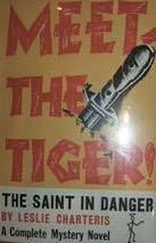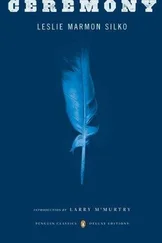I came back before long to make sure the tortoise did not venture around to the back yard with the four mastiffs. But the tortoise had dug himself down into the damp soft sand until he was partially buried, and partially concealed by the aloes. Sunset gave way to twilight and the tortoise remained there. How odd that it came there to spend the night. There were other places on the hilltop with soft sand the tortoise might have used. Why did the tortoise stop so close to us humans with dogs?
The following morning the tortoise was still partially covered with damp sand by the aloes. I checked on him from time to time. I wanted to see which direction he took when he left. At first he came down the path toward the front gate which I left open in case he wanted to come into the yard.
I watched the tortoise from a distance. When he reached the threshold of the gate he turned away and went downhill a short distance then he got on the diagonal path down the side of the hill that faces west. I checked a short while later and he was gone. I followed the path I’d last seen him take, but a thorough search under the greasewoods nearby revealed no sign of him. Tortoises like to make their burrows in the banks of the arroyos just high enough to stay out of the floodwaters. I walked down the steep slope into the west ravine to see if I might find the tortoise on his way to a burrow, but he’d disappeared.
The hummingbirds are contesting with one another for access to the feeder. They whizz around chasing one another; it seems mostly in jest, although last year I distinctly heard the sound of two tiny beaks clicking in combat. With the rain come the tiny sugar gnats that hover in the mesquite leaves; these gnats don’t bother humans. The hummingbirds zip and dart through the air and catch the gnats. That’s how the hummingbirds survive when flowers are scarce.
Again for the fourth day in a row great dark roiling clouds, armies of ghost warriors many legions wide, rise high over the southwest horizon of the black basalt mountains. While I was out walking I saw Chapulin on a greasewood watch me as I looked for rocks, and then in the yard, another grasshopper. All this rain brings them. Chapulin might be one of the Chacs, one of the Lords of the Rain.
The Anthropology Museum in Mexico City has a large exquisite figure of Lord Chapulin carved out of red chalcedony. The famed “Chapultepec” Gardens are the Grasshopper Gardens, where the Lord Chapulin and his Queen resided with unnumbered relatives and clans-people in the luxury of fresh running springs and a great abundance of fragrant flowers.
In the Cantares Mexicanos, the great epic of Nahuatl literature, “grasshopper” is another name for the ghost warrior. I didn’t understand the significance of this until later in the summer when the grasshoppers changed their attitude toward me and other humans.
Last night as we sat outside on the porch in the dark, Ratty, our archenemy who lives under the aloe patch in the front yard, came out and showed herself to us, almost as if she was greeting us or maybe taunting us — she chews up the wires in the engines of our cars and pulls the stuffing out of the old cushions on the white plastic chairs in the front yard.
Despite the curses we hurled at her when we saw her, Ratty seemed fond of us, and wanted in her way to join us. She sat outside her nest and watched us. The sound of human voices didn’t seem to upset her. I started laughing. I told Bill and Robert, “Look. Ratty is sitting with us; she thinks she’s our friend. She has no idea she’s our enemy.” I felt a fondness for her after that. She already figured out a long time ago that I wasn’t going to poison or trap her, only curse at her.
People ask me why not get rid of the big rat nest in my front yard. The piled debris crowns the entire four by six foot aloe patch. If it were simply a rat nest, I might have considered its removal. But Ratty and her clan aren’t the only ones that live there. A number of rattlesnakes call the rat tunnels under the aloes home and so do the great desert toads.
I know the ancient people here held the pack rats in high regard; in times of hunger Ratty’s pantry kept human beings alive. During droughts and famines, the hungry people used to raid the pack rats’ nests for the stores of seeds and jojoba nuts, dried cactus buds and fruits and any baby rats they might find.
Pampered and well fed, we might gag at the thought of sharing Ratty’s stores of mesquite and palo verde beans and dried cactus buds. But Allen Ginsberg had a story from a Buddhist monk during the Cultural Revolution in China. He told the story to us in 1984 in China as our delegation of U.S writers invited by the Chinese Writers Association visited Buddhist shrines. The story was about hunger. One of the Buddhist priests told Ginsberg that during the Cultural Revolution, after starving for weeks, he was so hungry that when he saw an undigested leaf of mustard greens in the shit of another priest, he picked the mustard leaf out of the shit, rinsed it off in a stream and ate it.
The huge toad that guards the front doorstep came out from her nest under the porch bricks, and sat awhile with us too. I like to think it is the same big toad I rescued from the cave-in of bricks under the front porch last year.
At night before I fall asleep I read as many Emily Dickinson poems as I can. Her poems are full of surprises — their rhyme schemes unpredictable and brilliant as are her uses of the colloquial with the classic. The themes of the poems cover a vast range and are filled with ineffable and mysterious glimpses of transcendence and eternity. How sensuous and joyous this poem is:
A Route of Evanescence
With a Revolving Wheel—
A Resonance of Emerald—
A Rush of Cochineal—
And every Blossom on the Bush
Adjusts its tumbled Head—
The mail from Tunis, probably,
An easy Morning’s Ride—
Emily Dickinson was famously reclusive, but how else to get the solitude and time to compose more than a thousand poems in one lifetime? She wrote many of her finest poems about bees or flies; her images of the sun and the light, of flowers and birds came to her in her garden. She wrote a wonderful poem about snakes that goes:
A narrow Fellow in the Grass
Occasionally rides—
You may have met Him — did you not
His notice sudden is—
The Grass divides as with a Comb—
A spotted shaft is seen—
And then it closes at your feet And opens further on—
He likes a Boggy Acre
A floor too cool for Corn—
Yet when a boy, and Barefoot—
I more than once, at Noon
Have passed, I thought, a Whip lash
Unbraiding in the Sun
When stooping to secure it
It wrinkled, and was gone—
Several of Nature’s People
I know, and they know me—
I feel for them a transport
Of cordiality—
But never met this Fellow
Attended, or alone
Without a tighter breathing
And Zero at the Bone—
Great thick whorled clouds fold over themselves bubbling up rising like silvery yucca soap suds. Veils of white rain soften and smear into pastel blues of towering sky dragons and cloud bears fishing in a fast river of wind.
Giant vertical clouds behind the Black Mountain take on the form of revenant warriors descending to Earth in swirling fog and mist. In the distance a faint rumble of thunder from the southwest, and the huge cloud flattens as it empties a deluge behind the mountains.
As the raindrops begin to fall from the cloud overhead the outline of the cloud begins to lose its edges, feathering into thin air. What lovely blue violet hues on the clouds along the west horizon.
This morning was too dry for rain, and the mist from the clouds evaporated before it reached the ground; it rose and once again became clouds.
Читать дальше












